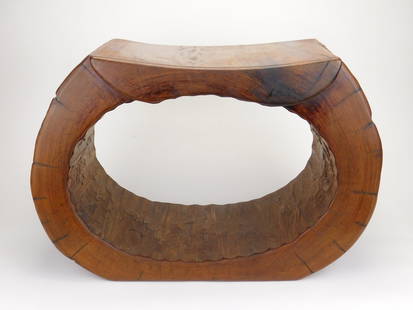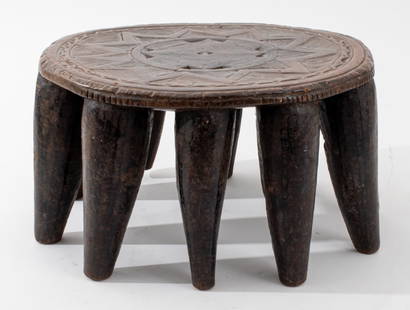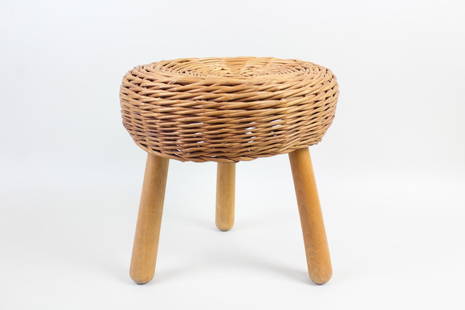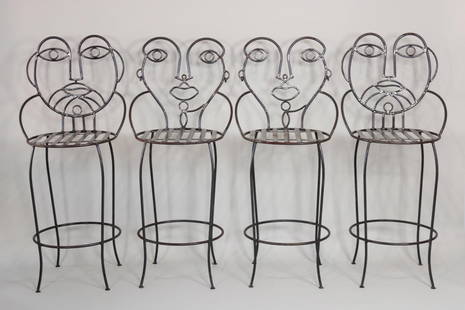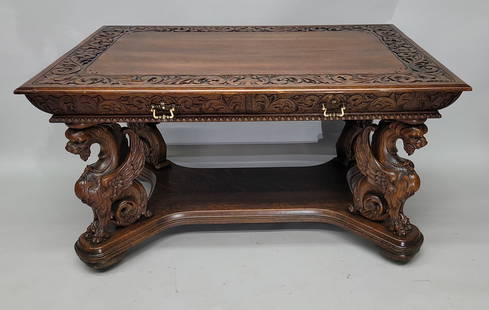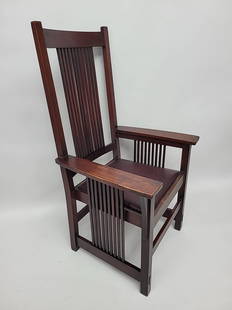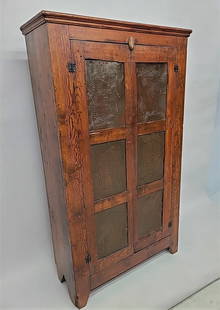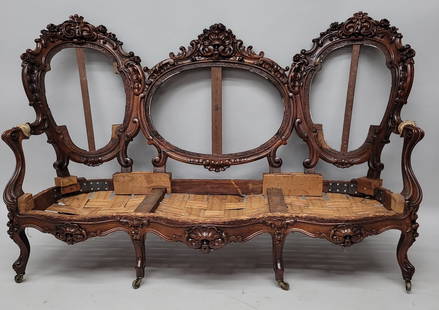
AXEL EINAR HJORTH (Sweden, 1888-1959). Lovo stool. Wood. Presents marks of use.
Axel Einar Hjorth Sale History
View Price Results for Axel Einar Hjorth


Related Benches & Stools
More Items in Benches & Stools
View MoreRecommended Furniture
View More








Item Details
Description
AXEL EINAR HJORTH (Sweden, 1888-1959).
Lovö Stool.
Wood.
With marks of use.
Measurements: 44 x 48 x 37,5 cm.
Stool made of pine wood with a finish of sober and robust lines. The piece follows the models designed by Axel Einar Hjorth, during the 1930s, when he was head designer of NK (Nordiska Kompaniet, where he worked from 1927 to 1938.
Architect and industrial designer Axel Einar Hjorth was one of the leading figures in the Swedish design culture that began to be internationally recognised in the 1920s. He was also instrumental in introducing Swedish decorative arts and architecture to the United States. Axel Einar Hjorth was born in Krokek, just outside Norrköping, Sweden. In 1908, Hjorth moved to Stockholm to study architecture and design at the Högre Konstindustriella Skolan, later known as Konstfack. He landed a position as a furniture and interior designer for Stads Hantverks Förening in the city of Stockholm in 1918. Hjorth's designs of this period were inspired by neoclassicism, often referred to as Swedish Grace. Throughout the 1920s, Hjorth worked with several manufacturers, including H. Joop & co, Myrstedt & Stern, Jonssons and Svenska Möbelfabrikerna in Bodafors. In 1923, Hjorth headed the mounting section of the Jubileumsutställningen (Jubilee Exhibition) in Gothenburg, an exhibition that the British critic P. Morton Shand called the beginning of Swedish dominance in the decorative arts. Wishing to spread Swedish design throughout the world, Hjorth, together with his contemporaries Carl Hörvik (1882-1954) and Carl Malmsten (1888-1972), represented Stockholm at the exhibition of contemporary Swedish decorative arts at the Metropolitan Museum in New York in 1927. This exhibition was instrumental in introducing Swedish decorative arts to America. From 1927 to 1938, Hjorth was the chief architect and designer of Nordiska Kompaniet (NK) in Stockholm, known as one of Sweden's most important producers of modernist furniture. During this time, Hjorth designed public and private interiors, and worked with international clients, including Iranian royalty. His first project for NK was a stand for the 1929 Barcelona World's Fair, where he exhibited the Louis cabinet and the Caesar cabinet. In the 1930s, Hjorth designed pine furniture intended for mass production for the summer houses he designed. These pieces mixed craftsmanship with international modernism, and were named after islands in the Stockholm archipelago, such as Blidö, Sandhamn, Toro and Lovö.
Hjorth's designs - from the sumptuousness of neoclassicism to the severity of functionalism - are very different in style, materials and character. However, unlike many of his contemporaries, Hjoth did not conform to the socially oriented ideas of Svensk Form (the Swedish Society of Craftsmanship and Design). He often incorporated playful ornamentation from different historical periods from which he drew inspiration, such as French Art Deco, using a mixture of exotic woods, bright colours and textiles. Often omitted from the historical discourse on early 20th century Scandinavian design, Hjorth has become largely unknown in the design world and his achievements are little appreciated. The lack of published or archived works contributes to his anonymity and obscurity. Although Hjorth did not follow the design narrative of the time, he undoubtedly played an important role in developing the international reputation of Swedish design, as his style eventually absorbed the design characteristics of modernism in Sweden.
Lovö Stool.
Wood.
With marks of use.
Measurements: 44 x 48 x 37,5 cm.
Stool made of pine wood with a finish of sober and robust lines. The piece follows the models designed by Axel Einar Hjorth, during the 1930s, when he was head designer of NK (Nordiska Kompaniet, where he worked from 1927 to 1938.
Architect and industrial designer Axel Einar Hjorth was one of the leading figures in the Swedish design culture that began to be internationally recognised in the 1920s. He was also instrumental in introducing Swedish decorative arts and architecture to the United States. Axel Einar Hjorth was born in Krokek, just outside Norrköping, Sweden. In 1908, Hjorth moved to Stockholm to study architecture and design at the Högre Konstindustriella Skolan, later known as Konstfack. He landed a position as a furniture and interior designer for Stads Hantverks Förening in the city of Stockholm in 1918. Hjorth's designs of this period were inspired by neoclassicism, often referred to as Swedish Grace. Throughout the 1920s, Hjorth worked with several manufacturers, including H. Joop & co, Myrstedt & Stern, Jonssons and Svenska Möbelfabrikerna in Bodafors. In 1923, Hjorth headed the mounting section of the Jubileumsutställningen (Jubilee Exhibition) in Gothenburg, an exhibition that the British critic P. Morton Shand called the beginning of Swedish dominance in the decorative arts. Wishing to spread Swedish design throughout the world, Hjorth, together with his contemporaries Carl Hörvik (1882-1954) and Carl Malmsten (1888-1972), represented Stockholm at the exhibition of contemporary Swedish decorative arts at the Metropolitan Museum in New York in 1927. This exhibition was instrumental in introducing Swedish decorative arts to America. From 1927 to 1938, Hjorth was the chief architect and designer of Nordiska Kompaniet (NK) in Stockholm, known as one of Sweden's most important producers of modernist furniture. During this time, Hjorth designed public and private interiors, and worked with international clients, including Iranian royalty. His first project for NK was a stand for the 1929 Barcelona World's Fair, where he exhibited the Louis cabinet and the Caesar cabinet. In the 1930s, Hjorth designed pine furniture intended for mass production for the summer houses he designed. These pieces mixed craftsmanship with international modernism, and were named after islands in the Stockholm archipelago, such as Blidö, Sandhamn, Toro and Lovö.
Hjorth's designs - from the sumptuousness of neoclassicism to the severity of functionalism - are very different in style, materials and character. However, unlike many of his contemporaries, Hjoth did not conform to the socially oriented ideas of Svensk Form (the Swedish Society of Craftsmanship and Design). He often incorporated playful ornamentation from different historical periods from which he drew inspiration, such as French Art Deco, using a mixture of exotic woods, bright colours and textiles. Often omitted from the historical discourse on early 20th century Scandinavian design, Hjorth has become largely unknown in the design world and his achievements are little appreciated. The lack of published or archived works contributes to his anonymity and obscurity. Although Hjorth did not follow the design narrative of the time, he undoubtedly played an important role in developing the international reputation of Swedish design, as his style eventually absorbed the design characteristics of modernism in Sweden.
Buyer's Premium
- 26%
AXEL EINAR HJORTH (Sweden, 1888-1959). Lovo stool. Wood. Presents marks of use.
Estimate €2,500 - €3,500
29 bidders are watching this item.
Shipping & Pickup Options
Item located in Barcelona, Barcelona, esOffers In-House Shipping
Payment

TOP


























